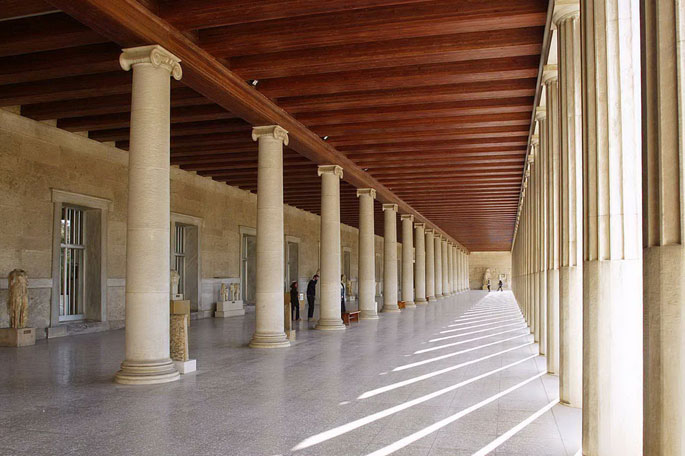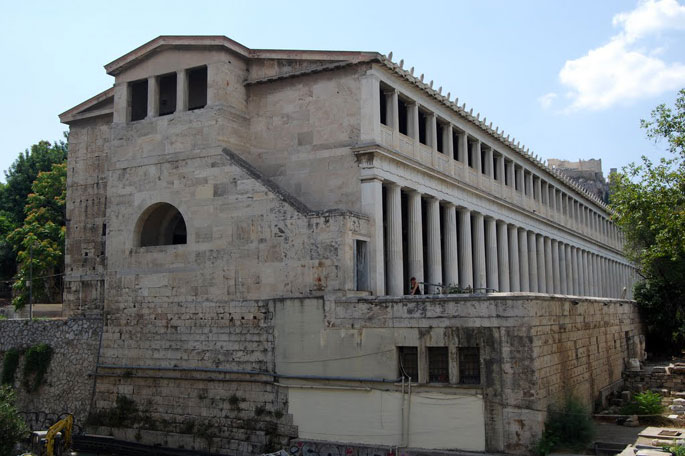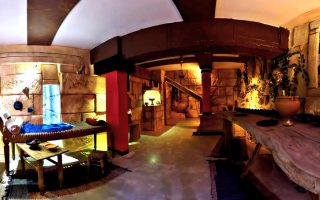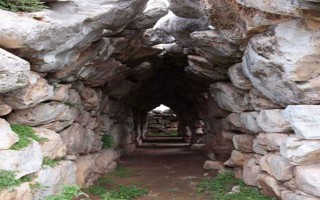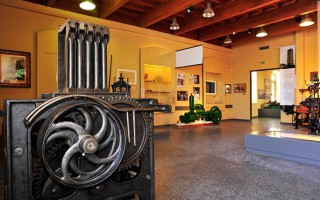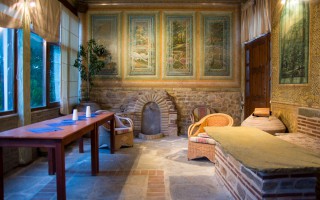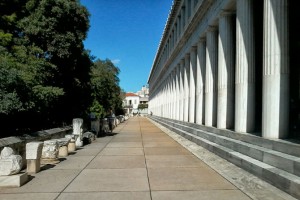 The impressive Stoa of Attalos, is the restored building located on the eastern side of the Ancient Agora. Now protected as part of the archaeological site, the stoa was named after King Attalus II of Pergamon, who gave it to the city as a gift. Erected over a span of twenty-one years, between 159 and 138 B.C., the stoa was, at the time, the longest free-standing, roofed building in the city. Built to house the city’s commercial activities, the two-story structure was 120 meters long, with 21 stores and workshops.
The impressive Stoa of Attalos, is the restored building located on the eastern side of the Ancient Agora. Now protected as part of the archaeological site, the stoa was named after King Attalus II of Pergamon, who gave it to the city as a gift. Erected over a span of twenty-one years, between 159 and 138 B.C., the stoa was, at the time, the longest free-standing, roofed building in the city. Built to house the city’s commercial activities, the two-story structure was 120 meters long, with 21 stores and workshops.
With walls constructed entirely of limestone, the doorjambs, doors, staircases, columns and wall studs were all made of white Pentelic marble. Destroyed during the Herulian sack of Athens in 267 A.C., the Stoa’s remnants were later used to build the Late Roman fortification wall. Rebuilt in the 1950s by the American Archaeological Institute, the Stoa rose again, this time to house the Museum of the Ancient Agora.
Source: www.athensattica.gr


